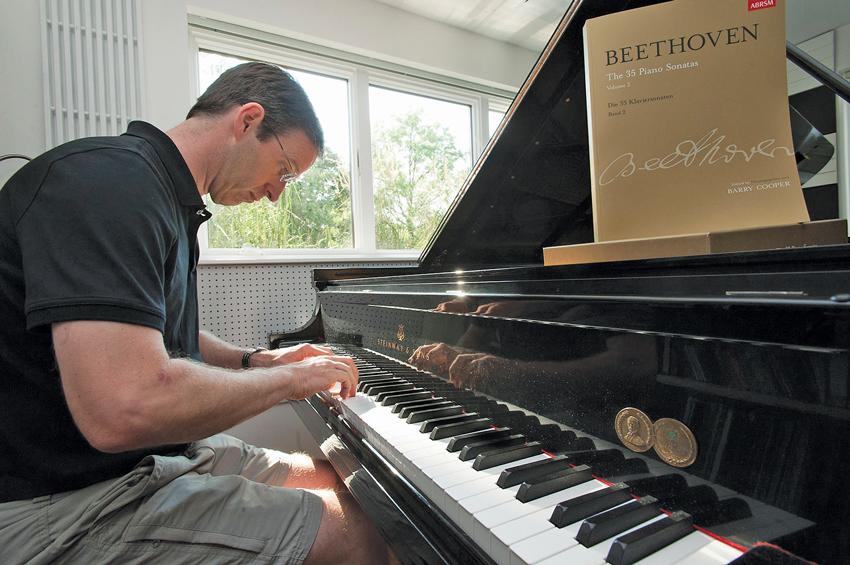Over the course of his four-year trek through Beethoven’s thirty-two piano sonatas, EMU piano professor Joel Schoenhals interspersed performances at Pease Auditorium with recitals in private homes across southeast Michigan. The “house concerts,” which continue, have come to define his approach to sharing music with the public. Works by great artists, he observes, have an uncanny way of shrinking the concert hall so that it takes on the intimacy of a living room. The importance of being spoken to gently rather than shouted at, he feels, is more important than ever in our age of noisy, attention-grabbing drama.
Standing, as it were, at the summit of Beethoven’s achievement, Schoenhals found himself looking back to Bach and forward to Brahms. Under the auspices of what he calls the Music Living Project, videos of each Beethoven sonata realization have been posted online, along with the partitas and character pieces he performed at Pease back in September to inaugurate his Bach-Brahms Project. On Friday March 24, Schoenhals will perform ten piano pieces by Brahms followed by Bach’s keyboard Partitas 3 and 5.
Each of the works in the Brahms portion of the program was composed during summer visits to Poertschach on the Woerthersee, the largest and loveliest lake in southern Austria. This garden resort was ideal for Brahms, who liked to compose while taking long walks. “All the mountains round the blue lake are white with snow,” he wrote to a friend, “while the trees are covered with delicate green. The air is so filled with flying melodies that one must take good care not to tread on them.”
Brahms dedicated the two Rhapsodies op. 79 to his trusted friend Elisabeth von Herzogenberg, who enthusiastically declared them “beautiful beyond measure.” The playful, Dvorak-like eccentricity of Brahms’ op. 76 no. 2 feels surprisingly modern and could almost be mistaken for an entr’acte by Shostakovich.
Schoenhals speaks of the bracing contrast when the richness of Brahms is followed by the transparency of Bach: “One experiences the huge range of expression that the piano is capable of.” Brahms’ thick, dark, rich textures call for lots of pedal, he explains, while Bach’s partitas, originally composed for harpsichord, use no pedal at all and are “more speechlike, with a lightness that is almost radiant.”
Here the piano professor has brought us to the crossroads of music theory and quantum physics. For when expertly performed and experienced under optimum conditions, Bach’s music can appear to be made out of light. The partitas seem to have been written out in photons, each note a vector composed of elementary particles, artfully aligned to convey the force we call music.
